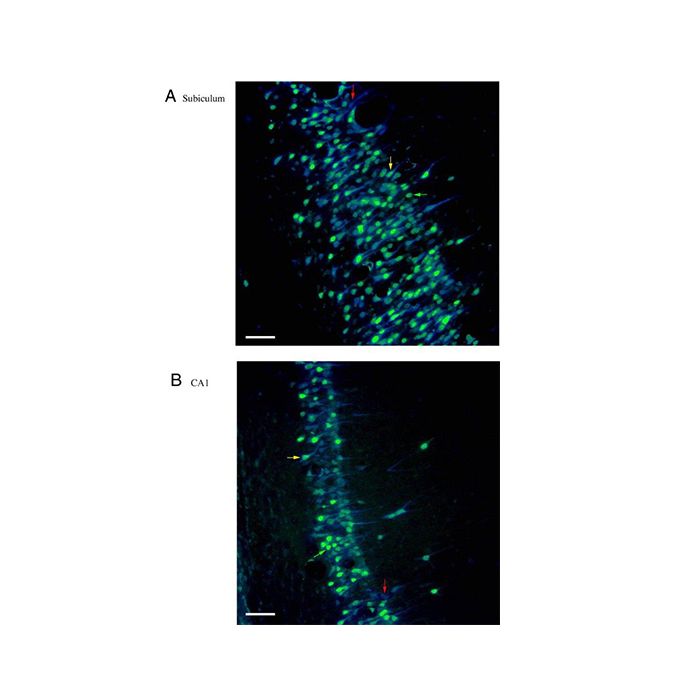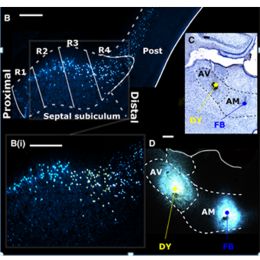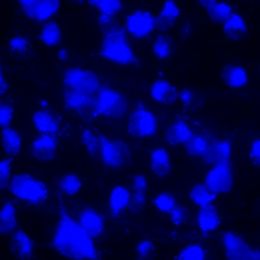True Blue (TB) Diaceturate Salt
C20H16N4O2 · 2C4H7NO3
True Blue (TB) is a fluorescent retrograde tracer used in experimental studies of the peripheral nervous system to determine the number and origin of neurons projecting to a specific area. The retrograde tracing techniques allow for detailed assessment of neuronal connections from a single population of neurons to their various targets throughout the nervous system. These techniques allow the "mapping" of connections between neurons in a particular structure (e.g. the eye) and the target neurons in the brain.
In rats, TB is effectively transported over long distances, from the spinal cord to the cerebral cortex, to produce blue fluorescent labeling of neuronal cell body cytoplasm, nucleolus, proximal dendrites and axons. When combined with Diamidino Yellow (DY), TB is effective in double labeling experiments aimed at demonstrating the existence of divergent axon collaterals.
Excitation: 365 nmEmission: 405 nm
Wouterlood, F. G. A survey of current neuroanatomical tracing techniques. Neural Tracing Methods: Tracing Neurons and Their Connection. Neuromethods 92,1–49 (2014). doi:10.1007/978-1-4939-1963-5_1
Bertelli, J. A. & Mira, J.-C. Nerve repair using freezing and fibrin glue: Immediate histologic improvement of axonal coaptation. Microsurgery 14, 135–140 (1993). doi:10.1002/micr.1920140210
Kuypers, H.G.J.M., Huisman, A.M. Fluorescent neuronal tracers, Adv. Cellular. Neurobiol. 5, 307-340 (1984).
Skirboll, L. et al. A method for specific transmitter identification of retrogradely labeled neurons: Immunofluorescence combined with fluorescence tracing. Brain Research Reviews 8, 99–127 (1984). doi:10.1016/0165-0173(84)90001-8
Keizer, K., Kuypers, H. G. J. M., Huisman, A. M. & Dann, O. Diamidino yellow dihydrochloride (DY.2HCl); a new fluorescent retrograde neuronal tracer, which migrates only very slowly out of the cell. Experimental Brain Research 51, 179-191 (1983). doi:10.1007/BF00237193
Björklund, A. & Skagerberg, G. Simultaneous use of retrograde fluorescent tracers and fluorescence histochemistry for convenient and precise mapping of monoaminergic projections and collateral arrangements in the CNS. Journal of Neuroscience Methods 1, 261–277 (1979). doi:10.1016/0165-0270(79)90038-4



